Just like most mammals, female squirrels are also great lovers and excellent mothers. They carefully choose which males to mate with, and their maternal instinct is superb. However, not all squirrel species have the same habitat, gestation period, and litter size. Nonetheless, all of them have the same mating habits.
Do female squirrels have two gestation periods? Most female squirrels have two gestation periods, which means they get pregnant twice a year. However, some species have only one gestation period. Depending on several factors, such as the season, females will be pregnant from 38 to 46 days after mating.
There are three main types of squirrels – tree squirrels, flying squirrels, and ground squirrels. They belong to the Sciuridae family, which also includes chipmunks. The three common tree squirrel species are fox squirrels, gray squirrels, and red squirrels. This article will let you learn more about their mating season, gestation period, and a lot more interesting facts about them.
How Can You Tell If a Squirrel is Pregnant?
There are several ways to spot pregnant squirrels. A pregnant woman will first increase her diet and drink consumption to accommodate the kits that are developing inside of her.
She will also start gathering materials for a nest, such as twigs and leaves. She might construct multiple nests as she gets ready to give birth.
Squirrels that are pregnant may exhibit unusually high levels of aggression and territoriality. Avoid approaching if you see this behavior.
How Long Are Squirrels Pregnant?
The majority of squirrels give birth after a 4-6 week pregnancy. Between species, there is a lot of variety. For instance, the eastern grey squirrel has a gestation period of roughly 44 days.
How Often Can Squirrels Get Pregnant?
Although yearling females can only have one, squirrels can have two a year. They typically start to appear in the spring and summer. The window of opportunity is small because females only experience estrus twice a year for one day at a time.
Mating and Gestation of Squirrels
1. Fox Squirrels
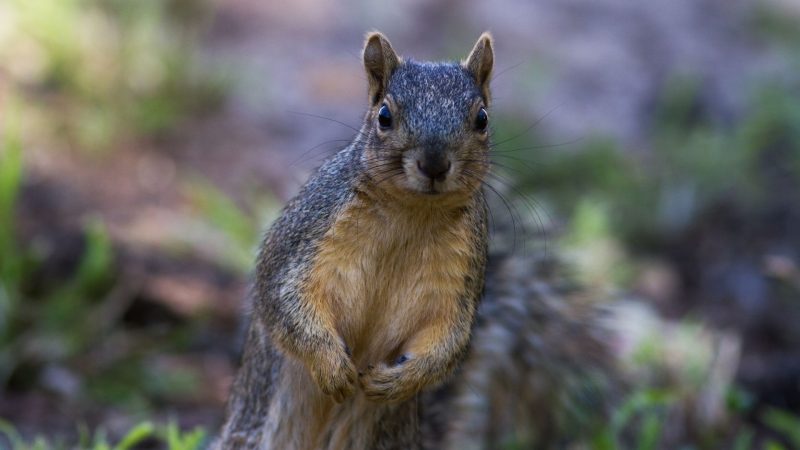
Scientifically known as Sciurus Niger, fox squirrels are also called Eastern fox squirrels.
- Size: The fox squirrel is the largest tree squirrel species native to the United States. It has an average length of 20 – 24 inches and a tail of 8 – 10 inches.
- Appearance and Color: Their most common fur color is reddish-brown, but it can also be pale gray or black. Fox squirrels have muscular bodies, white feet, and sharp claws, which help them in climbing trees easily.
- Nest and Habitat: They usually build leaf nests in open forests, oak savanna grasslands, pine forests, and mixed forests where trees are far apart. Hence, fox squirrels are very adaptable in both urban and suburban settings.
- Diet: Like most tree squirrels, fox squirrels are omnivorous creatures, which means they eat plants and animals. Among their favorite diet are nuts, walnuts, oak, and hickory, as well as flowers and buds of oak trees. They also eat seeds, fruits, corn, wheat, bird eggs, fungi, small insects, and the remains of small animals.
- Lifespan: In captivity, eastern fox squirrels can live up to 18 years. While in the wild, they can live between 8 and 18 years. But due to the huge presence of predators such as hawks and owls, most of them are killed before they become adults. Most babies of eastern fox squirrels that are born in the wild usually live for only 7 months.
How Many Babies Do Fox Squirrels Have?
Fox squirrels can mate any time of the year, but they mostly mate twice a year. Their first mating season is usually from December to February, while the second one is from May until June. This means that they give birth twice a year. Hence, the average gestation period is 44 days, and the litter size is 1 – 6 babies per single birth.
2. Gray Squirrels
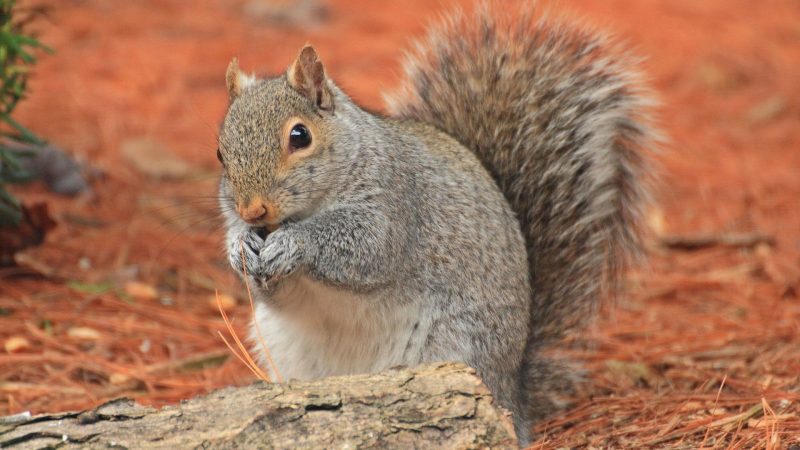
- Size: Eastern gray squirrels are 38 – 52.5 cm (14.9 – 20.6 in) long, with a tail length of 15 – 25 cm (5.9 – 9.8 in). On the other hand, western gray squirrels have a total length of 48 – 51 cm (18.8 – 20 in), while the tail is 18 – 25 cm (7 – 9.8 in). Therefore, eastern grays are generally smaller than western grays.
- Weight: Eastern gray squirrels weigh from 338 to 750 grams (11.9 to 26.4 ounces), while western gray squirrels weigh between 350 and 950 grams (12.3 and 33.5 ounces).
- Appearance and Color: The back fur of eastern gray squirrels ranges from grizzled dark grey to pale grey in the winter but will become yellowish-brown in the summer. Their underparts are usually buff or gray. On the other hand, the back fur of western gray squirrels is usually silver-grey throughout the year, while their underparts are mostly white. Both of these squirrel species have no sexual dimorphism in size and color. This means that males and females look similar in terms of appearance.
- Nest and Habitat: Eastern grays are adaptable in both urban and suburban areas, as well as in forests near human habitats. On the other hand, western grey squirrels prefer living in woodlands, coniferous forests, and elevated areas. Nevertheless, both of them build their nests (dreys) out of leaves and twigs, and they nest in hollow trees.
- Diet: Both squirrel species eat plants such as nuts, seeds, fruits, acorns, wheat, and flowers. They also eat animals, including small insects, frogs, bird eggs, and bones.
- Lifespan: The average lifespan of eastern gray squirrels is 6 years. In the wild, they can live up to 12.5 years. But in captivity, their maximum lifespan is 20 years.
How Many Babies Do Gray Squirrels Have?
In general, eastern gray squirrels have two gestation periods a year – in late winter and mid-summer. The gestation period is between 40 and 44 days, so the first birth will be from March to April, while the second birth will be from July to August. Females start mating at 1.25 years of age and will have 2 – 4 babies per litter.
On the other hand, western gray squirrels have only one gestation period, which is usually in the late spring. The average gestation period is 43 days, and females are sexually mature at the age of 10 – 11 months. They can have between 3 and 5 babies in a single birth. The younger ones have a smaller litter size than the older ones.
3. Red Squirrels
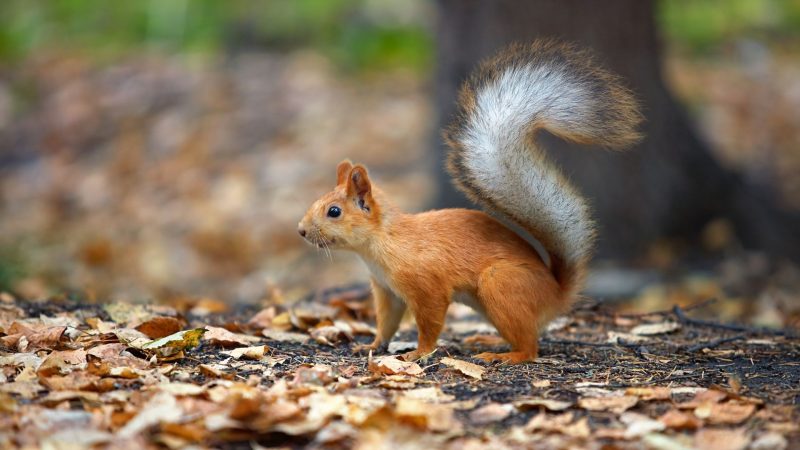
- Size: Scientifically known as Tamiasciurus Hudsonicus, red squirrels have an average length of 327.5 mm (12.9 in). Their total length can be from 270 to 385 mm (10.6 and 15.2 in), while their tail is between 92 and 158 mm (3.6 and 6.2 in) long.
- Weight: They can weigh from 197.3 to 282.2 grams (6.9 to 9.9 ounces).
- Appearance and Color: Unlike other tree squirrels, red squirrels (also called American red squirrels) have smaller bodies and smaller, thinner tails. In the summer, their back is usually deep red, while their underside is white or cream. But in the winter, their back can also be olivaceous gray or ferruginous brown, and they have tufted ears.
- Nest and Habitat: Red squirrels inhabit mainly coniferous, deciduous, and mixed forests at all elevations, particularly in the Appalachian and the Rocky Mountains. Nevertheless, they can also live in suburban and urban environments. Being arboreal animals, they build their nest in tree holes, which can be 10 – 60 feet above the ground.
- Diet: American red squirrels are mainly granivores, which means that their favorite diet is seed and grain. However, they can also eat nuts, buds, inner bark, fleshy fruits, mushrooms, insects, and bird eggs. In short, they can eat almost anything if food is scarce. These opportunistic species also bury food underground in the winter.
- Lifespan: In captivity, red squirrels can live between 9 and 10 years. But in the wild, their average lifespan is only 5 years, especially the babies. In fact, about 60 percent of them die in their first year, and around 20 percent die in their second year. This is because most of them are killed by predators such as foxes and raccoons.
How Many Babies Do Red Squirrels Have?
Red squirrels in the east and south have two gestation periods – in the spring and the late summer. But those living in the north, only have one gestation period, which is usually in the spring. Females are in estrus (heat) for only a day, and the average length of their gestation period is 35 days.
Both male and female red squirrels reach their sexual maturity once they are one year old. Just like all squirrel species, they are polygynandrous mammals, which means that both genders mate with multiple partners several times. Females give birth from 1 to 8 babies in a single birth, but the average litter size is only 3.
4. Flying Squirrels
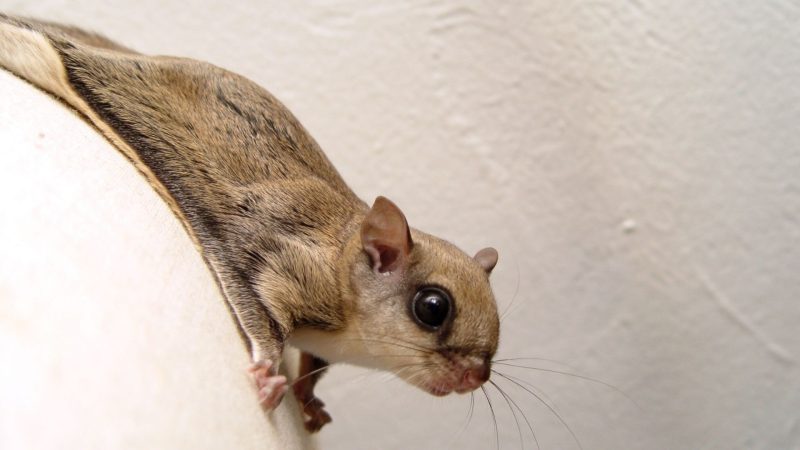
There are two types of flying squirrels in the US – the northern flying squirrels (Glaucomys sabrinus) and the southern flying squirrels (Glaucomys volans). Technically speaking, these squirrel species don’t fly but rather glide gracefully from one tree to another by using their fleshy membrane called a patagium.
- Size and Weight: An adult northern flying squirrel is between 10 and 12 inches (25.4 and 30.5 cm) long, with an average weight of 132.2 grams (4.66 ounces). On the other hand, the southern species is smaller at 8 and 10 inches (20.3 and 25.4 cm) long and is lighter at 65.4 grams (2.3 ounces). Their tails are about 80% of their total length.
- Appearance and Color: Both species are gray-brown, and both sexes look the same. However, northern flying squirrels have gray belly fur, while southern flying squirrels have white. Both of them also have furred, flattened tails and large, black eyes, which are very useful to them because they are nocturnal or are active only at night.
- Nest and Habitat: Flying squirrels live in mixed forests that are abundant in coniferous trees and seed-producing hardwood trees. Their nests are made of twigs, bark, leaves, and feathers and can be up to 18 meters (59 feet) above the ground.
- Diet: They eat a wide variety of foods, including acorns, nuts, seeds, fruits, insects, eggs, and fungus.
- Lifespan: Most northern flying squirrels have an average lifespan of 13 years in captivity and only 4 years or less in the wild. On the other hand, southern flying squirrels live up to 10 years in captivity and only 5 to 6 years in the wild. Like other squirrel species in the wild, most babies are killed before they reach 1 year old.
How Many Babies Do Flying Squirrels Have?
Male northern flying squirrels grow into sexual maturity at one year old, while females only become fertile at about 210 days old. This squirrel species has only one gestation period, which usually lasts from 37 to 42 days. Mating season is usually in the early spring, and females give birth to between 2 and 4 babies.
5. Ground Squirrels
The name “ground squirrel” can be applied to any squirrel species that primarily live on the ground instead of trees, hence the name. There are 62 known species of ground squirrels around the world, and the California ground squirrel is the most common species in the United States. All species are considered garden pests.
- Size and Weight: Generally speaking, adult ground squirrels are 14 to 20 in (35.5 to 50.8 cm) long, including their tail. They weigh between 595.34 and 850.486 grams (21 and 30 ounces).
- Appearance and Color: Depending on the species, they can be gray, olive, brown, or dark brown, while their undersides can be brown, white, gray, or partially or entirely black.
- Nests and Habitat: Ground squirrels can also climb trees, but they prefer digging holes in the ground to serve as their dens or nests. They excavate burrows that are usually 6 feet deep or even deeper, with a diameter of around 4 inches. Ground squirrels are more of a social mammal, so females usually share nests with other mothers. Most ground squirrel species are diurnal, which means they are most active during the day and sleep at night. Adult ground squirrels hibernate in the winter and estivate in the summer.
- Diet: Like tree squirrels and flying squirrels, they are also omnivorous creatures. Therefore, they eat insects, eggs, nuts, grains, leaves, twigs, vegetable seedlings, and fruits such as apples, avocados, and oranges.
- Lifespan: California ground squirrels may live up to 8 years in captivity, but their average lifespan in the wild is only 3 – 4 years. This is because around 90 percent of their babies die from predation even before they reach their first hibernation stage.
How Many Babies Do Ground Squirrels Have?
The mating season of ground squirrels can start as early as January, especially in warmer climates, and the peak season is from March to June. They only have one gestation period, which usually lasts between 29 and 31 days. Their average litter size is 5 – 8 babies, but some mothers can have 15 babies in a single birth.
Do Squirrels Abandon Their Babies if Humans Touch Them?
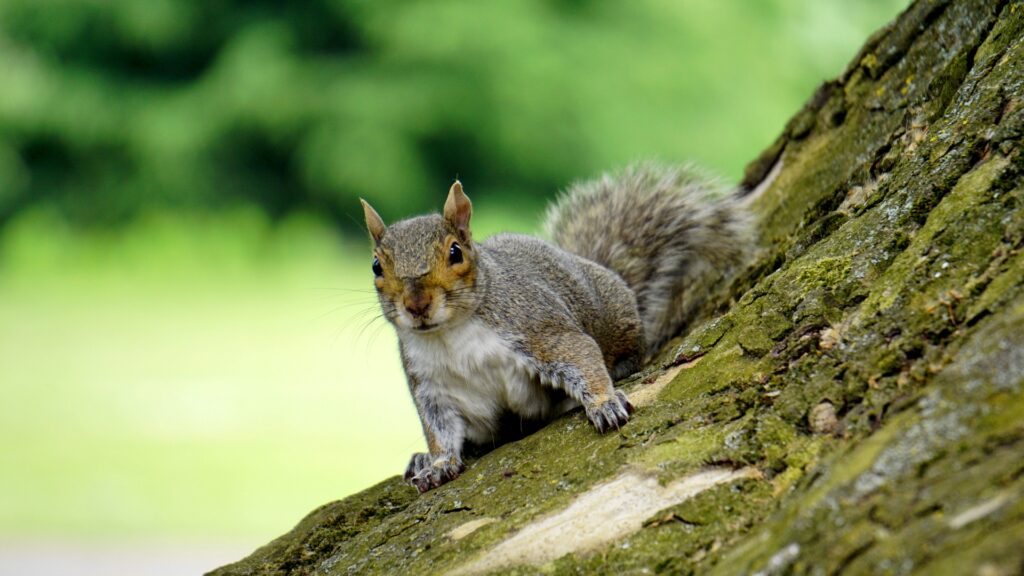
Contrary to traditional beliefs, squirrels will not abandon their babies if humans will touch them. In general, mammals and birds don’t care if you touch their babies, and they will still accept them. In fact, a mother squirrel will be very happy if you find her baby squirrel and return it to her. Their reunion is exciting to watch.
Do Female Squirrels Have Menstrual Cycles?
Female squirrels don’t have menstrual cycles like human females have every month. Instead, they experience estrus (sometimes spelled oestrus), a period when they are perceptive or in heat. This sexual cycle period of squirrels is only about 1 or 2 hours in a year. In some species, though, it can happen twice a year.
Related: Types of Squirrels | Information and Facts
List of Sources
Baldwin, R. (2016). How to Manage Pests – Pests in Gardens and Landscapes: Tree Squirrels. University of California.
Thurston, S., Brittingham, M. (1997). Tree Squirrels. The Pennsylvania State University.
Fox Squirrel, Sciurus Niger. Carleton College.
Fox Squirrel Study. Virginia Polytechnic Institute and State University.
Fox Squirrel. University of Michigan.
- How to Get Rid of Copperheads | Practical Guide - August 27, 2023
- How to Get Rid of Corn Snakes | What Makes Them Aggressive? - August 27, 2023
- How to Get Rid of Alligators | Safety Measures and Removal Methods - July 16, 2023
